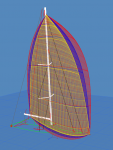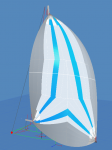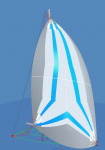zoidberg
Well-known member
I'm more confused now than when I started.....
'Serves you right,' you say, 'for talking to sailmakers'. But - I've been listening hard.... and reading their leaflets, viewing their videos, downloading and watching their Facebook clips.
I'm looking to order ONE new bag for my wee boat, and I've been trying to optimise my ideas of what I want and why..... But each and every sailmaker seems to have his own differing, unique ideas - and own terminology to describe them.
So, can some clewed-up ( sic ) mariner explain to me the salient differences between a 'cruising chute' and an 'asymmetric' of similar size? I mean, there's only one mast and only one spinni halyard.
'Serves you right,' you say, 'for talking to sailmakers'. But - I've been listening hard.... and reading their leaflets, viewing their videos, downloading and watching their Facebook clips.
I'm looking to order ONE new bag for my wee boat, and I've been trying to optimise my ideas of what I want and why..... But each and every sailmaker seems to have his own differing, unique ideas - and own terminology to describe them.
So, can some clewed-up ( sic ) mariner explain to me the salient differences between a 'cruising chute' and an 'asymmetric' of similar size? I mean, there's only one mast and only one spinni halyard.





